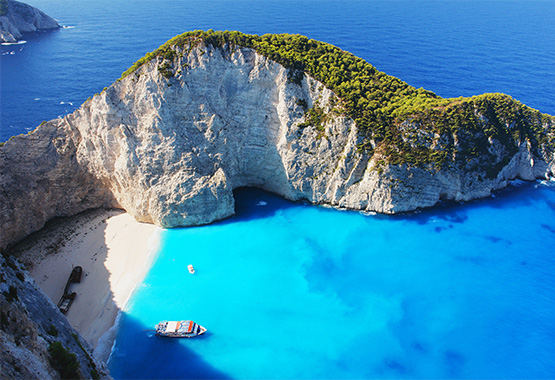The beauty of art lies in its diversity. And when it comes to Indian Art, there is no dearth of different styles and themes. There are several art forms, including paintings from across the country that stand out because of their unique characteristics and sheer brilliance. One such art or form of painting is the Kishangarh’s Miniature Painting.The Kishangarh Miniature paintings were originated in the state of Kishangarh, Rajasthan. It flourished during the 18th century. This school of painting has its own distinctive style, history, and story of evolution.
Miniatures paintings are small-scale, highly detailed paintings. The earliest Miniature paintings in India can be traced back to the 7th century AD, when they flourished under the patronage of the Palas of Bengal. With the advent of Persian influences in the 15th century, paper replaced palm leaves, while hunting scenes and varied facial types started appearing along with the use of rich aquamarine blues and golds. Due to decreased patronage during the reign of Aurangzeb, many artists proficient in Mughal Miniature Art migrated to other princely courts. Subsequently, Rajput miniature painting developed in the modern day Rajasthan in the 17th-18th century.
Unlike Mughal miniature art, which depicted royal life, Rajasthani miniatures centred around the love stories of Lord Krishna and the mythological literature of Ramayana and Mahabharata, created as manuscripts and decorations on the walls of havelis and forts. Many distinct schools of Rajasthani miniature art were established, like the schools of Malwa, Mewar, Marwar, Bundi-Kota, Kishangarh and Amber.
The beating heart of Kishangarh art is the eternal love story of Radha and Krishna. Their distinguishing characteristics are the precision with which the individual features of men and women are painted. The facial expressions and features are delicate, graceful, and sensitive. The painted characters have elongated faces with pointed chins and noses. Their beautifully curved almond-shaped eyes have long eyelashes and their hair is usually serpentine. The women figures are slim and tall, whereas, males have their chest pushed out or are seen wearing Kishangarh turbans on their heads.This is the language of Kishangarh art, speaking of elegance and sensitivity in every stroke.
In fact, it all began with Raja Sawant Singh(1748 – 57), a passionate artist and poet, who fell in love for Bani Thani, a captivating singer. He poured his soul into depicting Bani as Radha, the divine consort of Krishna, under the pen name Nagari Das. According to some sources, Bani Thani’s real name might have been Vishnupriya and she was a singer in the King’s court. Both were creative, aesthetic artists and devoted to Bhakti and Krishna. Unsurprisingly, soon their love became legendary.
But it was artist Nihal Chand who immortalised their love story through his paintings and mastery of the brush and strokes. Sawant Singh induced the idea of a Krishna-Radha series to Nihal Chand. And hence, the two lovers became the real faces of the Kishangarh paintings. Additionally, Savant Singh was an accomplished poet himself. He encouraged Nihal Chand to paint and give expressions to his many poems and artistic works, including the depiction of his poem ‘Boat of Love.’ This painting is today on a display at the National Museum in Delhi.
Both Bhakti and Shringar were the cornerstones of the Kishangarh paintings. The main theme was, however, focused on the love story of Radha- Krishna. And both Radha and Krishna were inspired by the real-life couple – King Savant Singh and Bani Thani. The intricate love-stricken expressions and romantic nuances in the painting are a reflection of the passion between the King and his mistress. The magnificent series of Krishna-Radha painted by Nihal Chand marks the hallmark of Kishangarh Miniature paintings, bearing in theme and style what the school truly stands for. The King however, gave up his throne in the later years and with Bani Thani went to Vrindavan. They both lived their last years in peace and meditation. Today, their tombs are found alongside each other in Vrindavan.
Miniature art forms are captivating expressions of creativity within a small scale. They encompass a wide range of artistic disciplines, showcasing intricate details and immense talent within a compact frame. Characterised by vibrant colours, delicate brushwork, and intricate storytelling, often depicting scenes from mythology or literature.
The miniature is a type of two-dimensional artwork that involves the design and creation of small paintings on books, rugs, textiles, walls, ceramics and other items using raw materials such as gold, silver and various organic substances. Even the paper used is special; polished with stone to render a smooth, non-porous surface.
Historically, the miniature was exemplified by book painting in which the text was supported visually, but the element has evolved and can also be observed in architecture and as an adornment in public spaces. The patterns of the miniature represent beliefs, worldviews and lifestyles in a pictorial fashion and also gained a new character through the Islamic influence.
The miniature displays a specific type of perspective in which the size of the figures changes according to their importance - a key difference from realistic and naturalistic styles. Though it has existed for centuries, it continues to develop and thus strengthens the bonds between past and present. Traditional painting principles and techniques are preserved, but artists also bring individual creativity into the process.
About Rajnish Nimbark
Rajasthan, the vibrant land of forts and deserts, boasts a rich artistic heritage, with miniature painting being one of its crown jewels. Imagine tiny, jewel-like paintings bursting with colour, filled with intricate details and captivating stories. That's the magic of Rajasthani miniatures!
These paintings are often palm-sized or even smaller, like precious jewels. They were created on paper or mica, tucked into albums, or adorned manuscripts and boxes. The characters in Kishangarh paintings have a unique look. They have big, almond-shaped eyes that seem to gaze right at you, and slender faces with pointed chins. Their hair flows like long, graceful waves, adding to the dreamlike aura. Kishangarh artists use bright, natural colours like green, blue, pink, and orange to paint lush landscapes and sparkling skies. Flowers and birds often make an appearance, adding to the feeling of a beautiful wonderland.
Catterfly master artist Mr. Rajnish Nimbark is a State Award Winning artist from Jaipur, Rajasthan in India. He comes from a family of artists who have practised traditional Rajputana and Moghul style of miniature paintings and Pichwai painting for centuries in the courts of the Mughal as well as the Rajput Kings. He learned this art form from his father Ghanshyam Nimbark and has been practising this artform for the last 25 years. With traditional artists like Mr. Rajnish Nimbark its not only about learning the techniques of art, but also about its history, cultural context and the folktales that make the entire experience far richer.


































